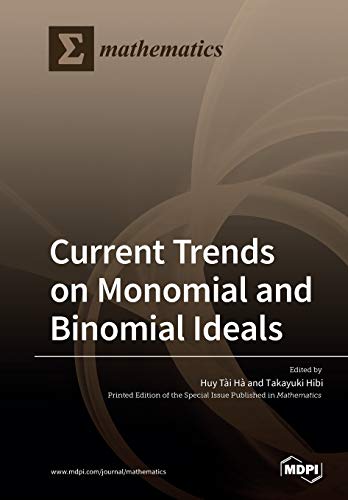

Most ebook files are in PDF format, so you can easily read them using various software such as Foxit Reader or directly on the Google Chrome browser.
Some ebook files are released by publishers in other formats such as .awz, .mobi, .epub, .fb2, etc. You may need to install specific software to read these formats on mobile/PC, such as Calibre.
Please read the tutorial at this link: https://ebookbell.com/faq
We offer FREE conversion to the popular formats you request; however, this may take some time. Therefore, right after payment, please email us, and we will try to provide the service as quickly as possible.
For some exceptional file formats or broken links (if any), please refrain from opening any disputes. Instead, email us first, and we will try to assist within a maximum of 6 hours.
EbookBell Team

0.0
0 reviewsHistorically, the study of monomial ideals became fashionable after the pioneering work by Richard Stanley in 1975 on the upper bound conjecture for spheres. On the other hand, since the early 1990s, under the strong influence of Gröbner bases, binomial ideals became gradually fashionable in commutative algebra. The last ten years have seen a surge of research work in the study of monomial and binomial ideals. Remarkable developments in, for example, finite free resolutions, syzygies, Hilbert functions, toric rings, as well as cohomological invariants of ordinary powers, and symbolic powers of monomial and binomial ideals, have been brought forward. The theory of monomial and binomial ideals has many benefits from combinatorics and Göbner bases. Simultaneously, monomial and binomial ideals have created new and exciting aspects of combinatorics and Göbner bases. In the present Special Issue, particular attention was paid to monomial and binomial ideals arising from combinatorial objects including finite graphs, simplicial complexes, lattice polytopes, and finite partially ordered sets, because there is a rich and intimate relationship between algebraic properties and invariants of these classes of ideals and the combinatorial structures of their combinatorial counterparts. This volume gives a brief summary of recent achievements in this area of research. It will stimulate further research that encourages breakthroughs in the theory of monomial and binomial ideals. This volume provides graduate students with fundamental materials in this research area. Furthermore, it will help researchers find exciting activities and avenues for further exploration of monomial and binomial ideals. The editors express our thanks to the contributors to the Special Issue. Funds for APC (article processing charge) were partially supported by JSPS (Japan Society for the Promotion of Science) Grants-in-Aid for Scientific Research (S) entitled "The Birth of Modern Trends on Commutative Algebra and Convex Polytopes with Statistical and Computational Strategies" (JP 26220701). The publication of this volume is one of the main activities of the grant.